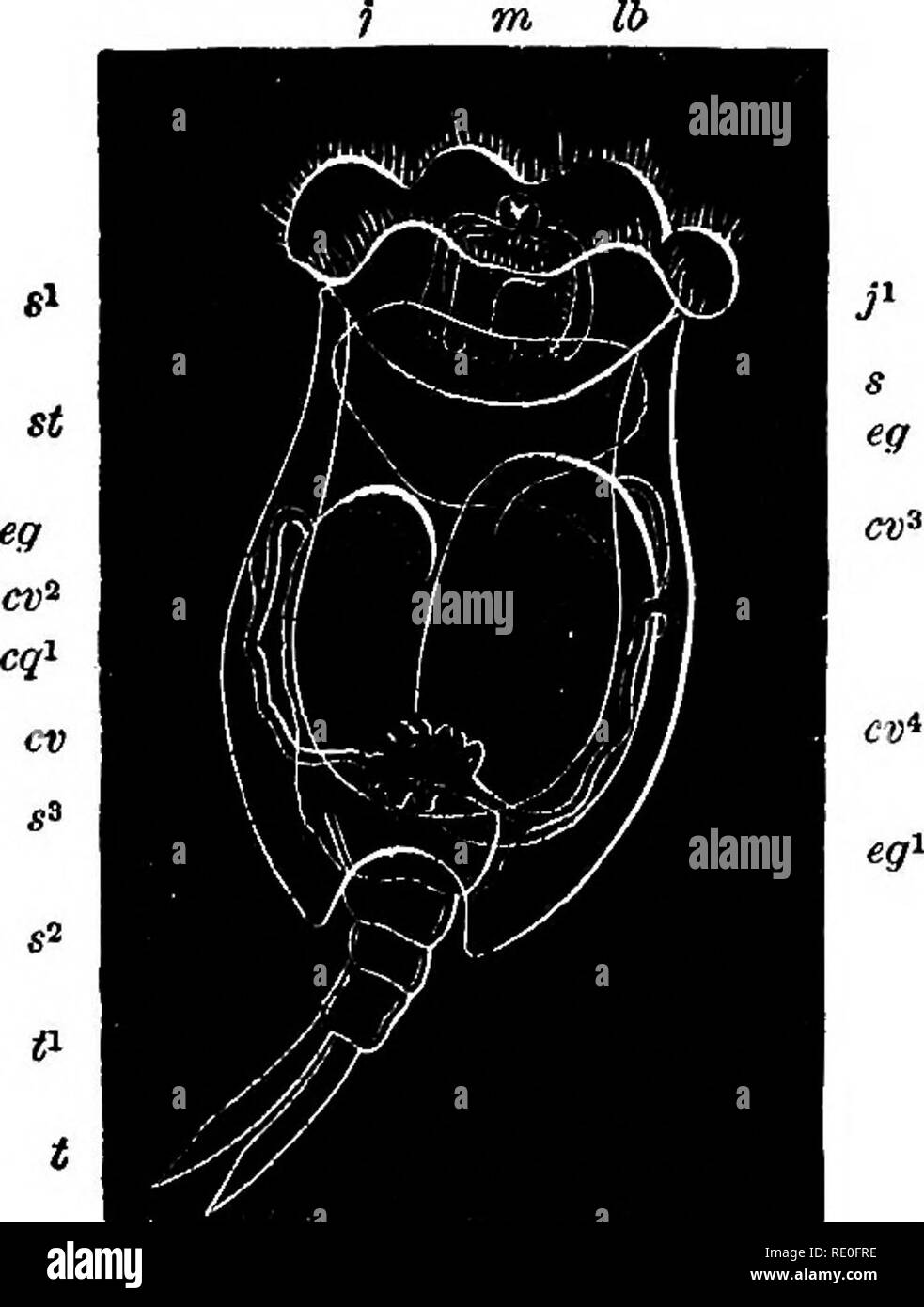. Zoology for high schools and colleges. Zoology. 17f5 ZOOLOG r. Class III.—Rotatoria {Rotifers), General Characters of Rotifers.—The Eotifers, or wheel- animalcules, are abundant in standing water, in damp moss, etc., and in the oc(;an, and are so transparent that their in- ternal anatomy can be studied without dissection, while they are so minute, being from one fortieth to three hundredths of an inch in length (| to f mm.), that high powers of the microscope are needed in. studying them. They are of special interest from the fact that after being dried for months to such a degree that littl

Image details
Contributor:
The Book Worm / Alamy Stock PhotoImage ID:
RE0FREFile size:
7.1 MB (178.5 KB Compressed download)Releases:
Model - no | Property - noDo I need a release?Dimensions:
1375 x 1817 px | 23.3 x 30.8 cm | 9.2 x 12.1 inches | 150dpiMore information:
This image is a public domain image, which means either that copyright has expired in the image or the copyright holder has waived their copyright. Alamy charges you a fee for access to the high resolution copy of the image.
This image could have imperfections as it’s either historical or reportage.
. Zoology for high schools and colleges. Zoology. 17f5 ZOOLOG r. Class III.—Rotatoria {Rotifers), General Characters of Rotifers.—The Eotifers, or wheel- animalcules, are abundant in standing water, in damp moss, etc., and in the oc(;an, and are so transparent that their in- ternal anatomy can be studied without dissection, while they are so minute, being from one fortieth to three hundredths of an inch in length (| to f mm.), that high powers of the microscope are needed in. studying them. They are of special interest from the fact that after being dried for months to such a degree that little if any moisture is left in the body, they may be revived and become active. Pro- fessor Owen has observed the revivification of a Rotifer after having been kept for four years in dry sand. As an example of the ordinary type of Rotifer we may cite Squamella Fig. Vii.—Sqnamella Mm.qa, Tnaenifled 200 oMoiiga (Fig. 121), which diameters. A view fi-om helow; shell or cara- • „li;pj 4-„ Tirnr-Jtin'niiQ pace (s, .«', «');«, the anterior transverse edge ^^ ttiiicu. i^u ^iuoriounai. of the carapace; s', the anterior, and «=, ttie TVip fliiirnf'+priat-iV nTCTar posterior corners of the carapace ;/!Mhe border ^'^^ cnaraCXeriSUC Organ or the oval, flat area which occnpies the lower of the wheel-animalculeS face of the carapace; Ih, the cilia-benring velum . of the head; C the fork of the; tail «'); m, the is the veluvi (IV) Or pair mouth:.;, jaws;./', muscles which move.;': s*, r. -i- , j i i i-i a stomach ; an, the contractile vesicle, or heart of 01 Ciliated Wheel-like oaps the excretory hyetem; ct;', eifl, the right, and , . , „ , , , , CT=, 60<, the left excretory vessels : eg.eg^, eg^, On eacll Side 01 the head, two largely developed young.-Af, er Clark. ^j^.^j^ -^ comparable to the velum of the larval mollusk. By means of the rotatory movements of this velum the creature is whirled swiftly around. The body is broad and flattened, Avith the walls often dense, chit